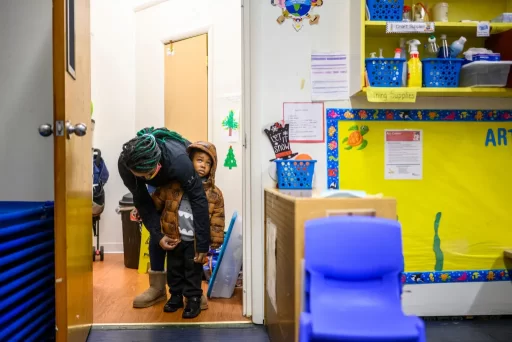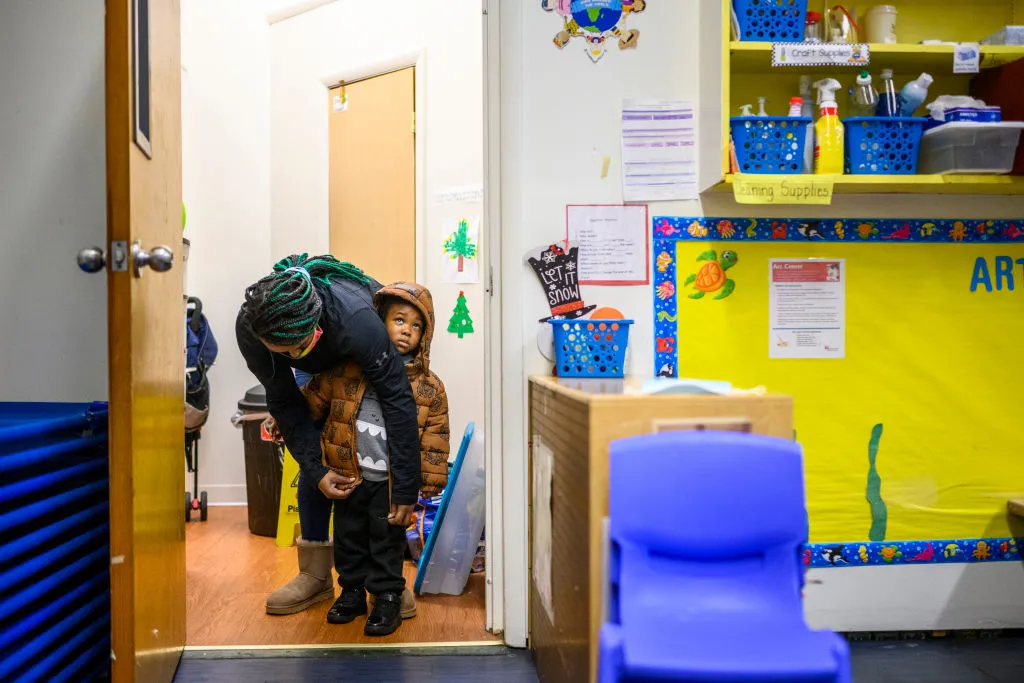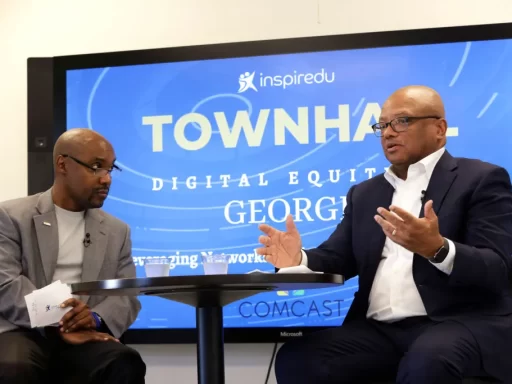The Little Flowers Early Childhood and Development Center in Baltimore is shown on January 12, 2021. | Source: The Washington Post / Getty
Child care is an essential infrastructure – just like roads, bridges, public schools and libraries. Everyone should be able to access child care that meets their unique needs. And because child care is so critical, child care educators should receive competitive wages and benefits.
However, in the United States, early childhood education and care is not fully funded nor is there a comprehensive plan to ensure that families, children and providers alike receive what they need. And things could get worse. This places immense stress on parents, child care providers and the entire community.
MORE: A National Day Without Child Care: Black Providers, Parents Explain Urgency Of The Moment
During the pandemic, Congress passed the American Rescue Plan (ARP) which provided an unprecedented $24 billion in subsidies to child care providers to stay afloat. The funds were intended to enable child care providers to hire staff, pay them a competitive rate and retain them. And during the height of the pandemic, the funding meant essential workers could get to their jobs with one less thing to worry about.
With child care centers at full capacity, more families could access care and return to the workforce. More centers could keep their dedicated staff and the economy could continue to grow.
This pandemic-era funding also meant that young children were able to receive the care they needed to support their social/emotional development as well as their academic growth. In addition to being a lifeline for providers and families alike, the funds were flexible and created a sense of stability at a time when it was desperately needed. I remember the early days. You probably do too. Fear abounded and concerns about whether providers would have to shut their doors nearly immobilized child care centers as well as families. Parents struggled with how they were going to work and get their children to environments that were safe and supportive.
If the pandemic meant we could no longer deny the inequities that had long existed, the ARP proved that our leaders have always had the ability to address them — from health care to child poverty to education; they had only lacked the political will before.
Unfortunately, ARP funding expired in September of 2023, resulting in a devastating child care cliff. In the nine months since, not enough has been done at the federal level to stave off the impacts of this loss of funding. While 11 states and the District of Columbia implemented some form of stop-gap measures where localities provided funding for child care, this is a temporary fix. We need federal action now to ensure that children receive what they need, child care educators can earn a thriving wage and stay in the industry they love, and child care providers can keep their doors and classrooms open.
Although the COVID-19 pandemic has passed, families don’t need child care services any less. And child care providers are once again losing staff to the retail and restaurant industries because they cannot offer competitive wages. It is particularly painful to care for other children knowing full well you are not earning enough to care for your own. Everyone needs to earn enough to care for themselves and their families; a point few would disagree. That is why it is critical that Congressional leaders take action to invest in our nation’s broken child care system.
For nearly a year, advocates have champion for real solutions for this critical lifeline for children, families and child care providers alike. Child care is the work that enables all other work to proceed – this is especially true when it comes to workforce participation for women, low-income families, and families of color Some states like Vermont and New Mexico are making strides towards universal child care, but the United States doesn’t have a comprehensive system or strategy for funding early childhood education and care. This patchwork approach underscores the need for a unified federal system. When many people talk about education funding, they’re referring to kindergarten through grade 12. But in the same way we fund kindergarten through grade 12, we need a funding system for birth through age five.
While the ARPA funding helped mitigate a child care disaster by ensuring providers could retain staff, and that more families could continue to access child care, the child care system in this country has long been on the brink of collapse. ARPA funding was a life jacket that has unfortunately been ripped away. In the same way that few would want to be lost in the ocean without support, families and providers don’t want to be in the morass of inadequate and inaccessible early childhood education and care.
In order to properly serve children, families and child care providers, we need a child care system that is:
Accessible to all, including immigrants and undocumented individuals;
Accessible to all families whether they live in urban, suburban or rural communities;
Supportive of the wellbeing of child care providers and families alike;
Universal, fully-funded, and financially stable;
Responsive to the needs of children and families during school and after school;
Equitable;
Culturally and linguistically responsive;
Financially stable; and
Informed by the communities directly impacted by the lack of fully funded early childhood education care.
Congress must fund a child care system that works for our kids, providers, communities, and economy. If the wealthiest individuals and corporations paid their fair share in taxes, there would be more than enough to create the child care system we need.
In this moment, nothing else should matter. Our near singular focus should be on getting funding to stabilize the child care system and position it to fully serve our communities. We must continue to sound the alarm on the need for adequate investments in early childhood education and care.
Zakiya Shaakir-Ansari is co-director of the Alliance for Quality Education in New York, a member of the Raising Child Care Fund, and a board member for the Schott Foundation for Public Education.
SEE ALSO:
Congress Must Work With Directly Impacted People On Any Solution To The Child Care Crisis
How D.C. Mayor Bowser’s 2025 Budget Is Bad For Families And The Economy






